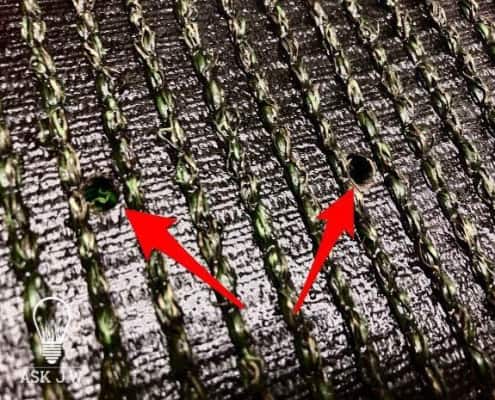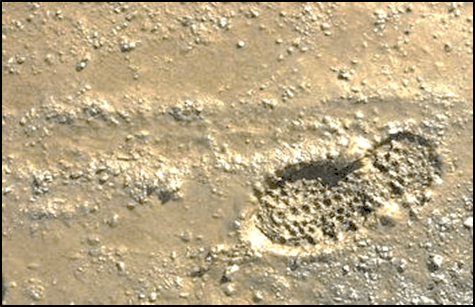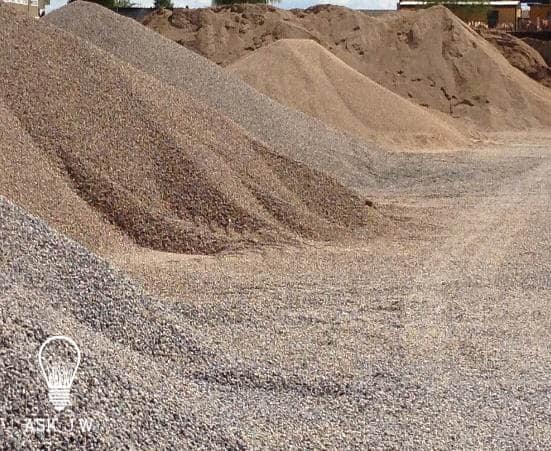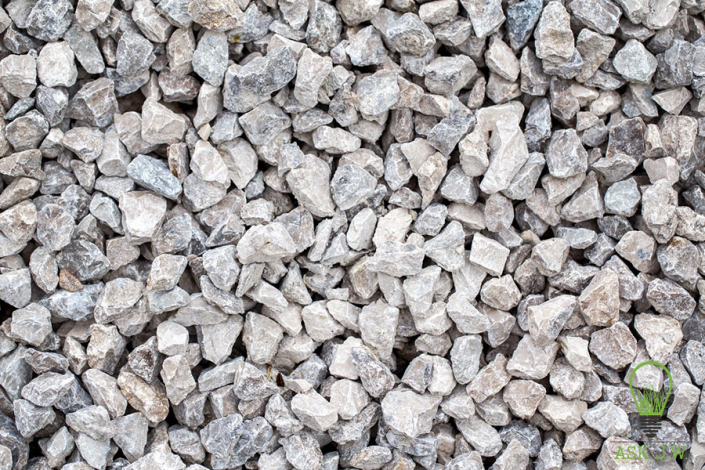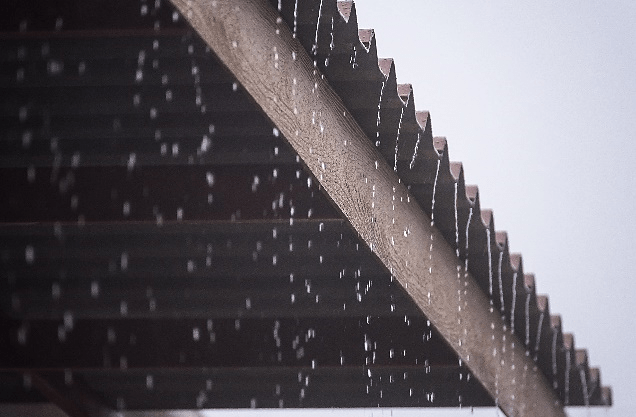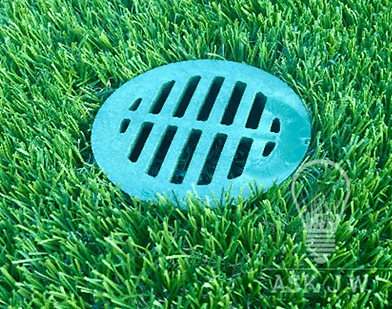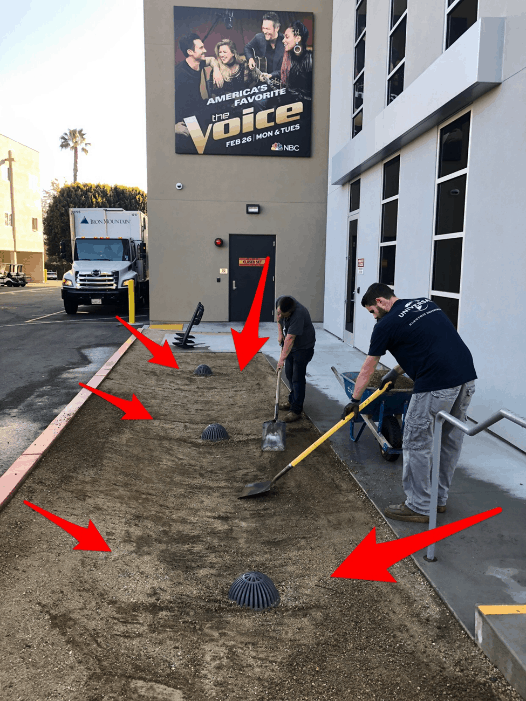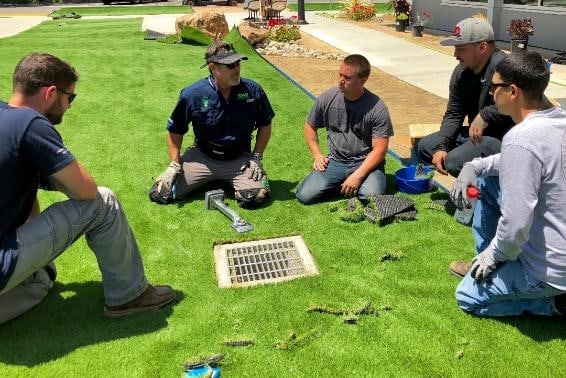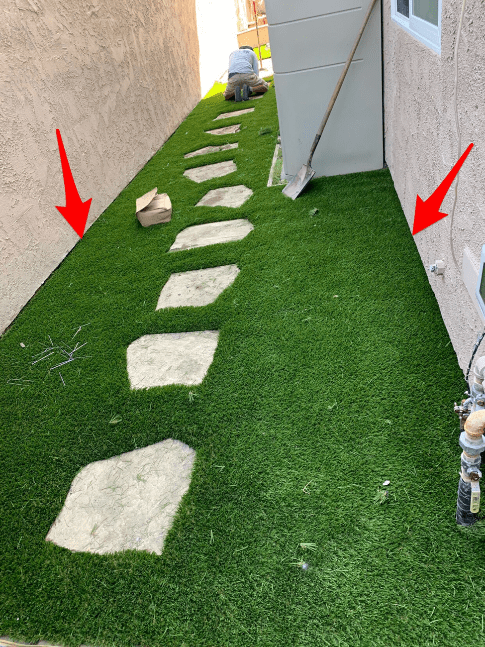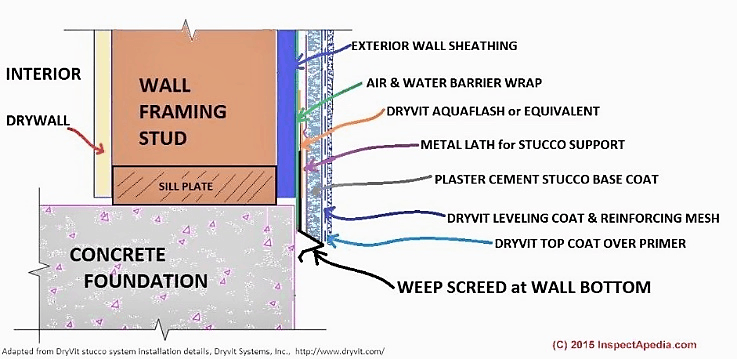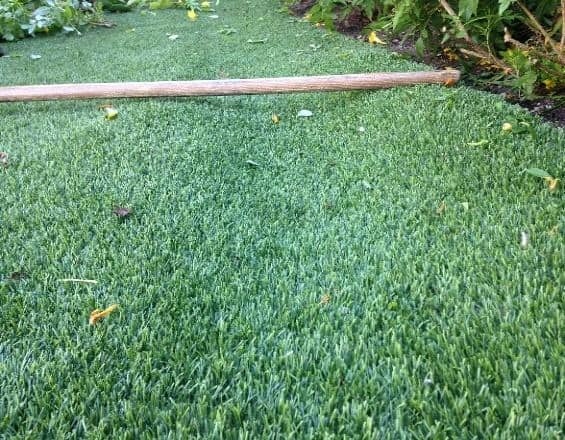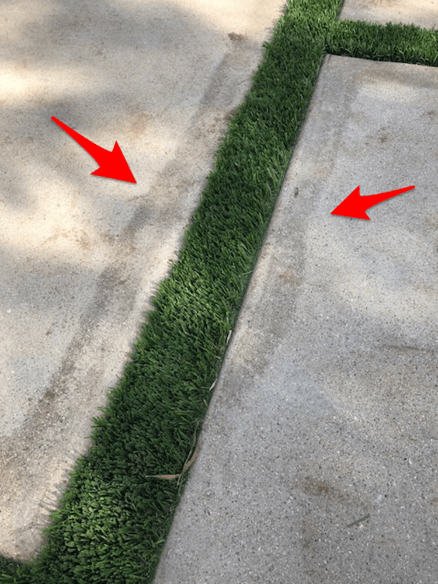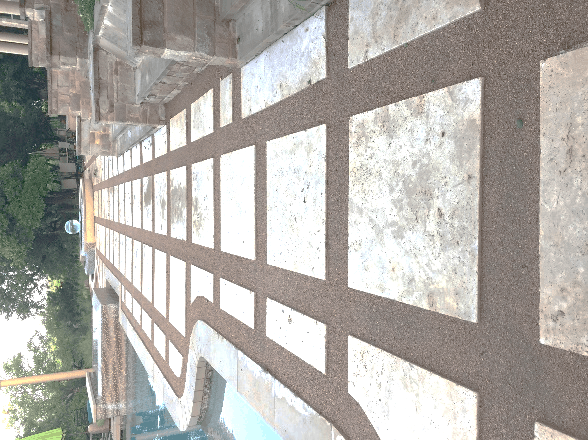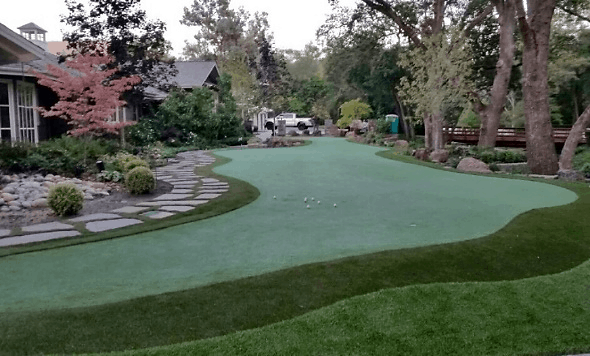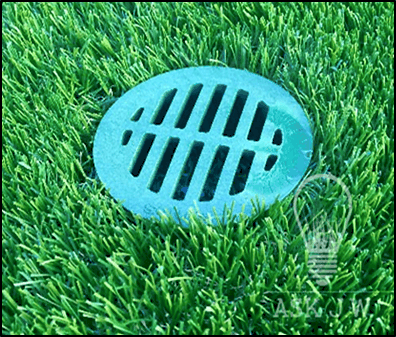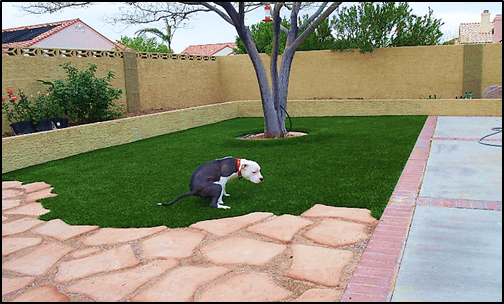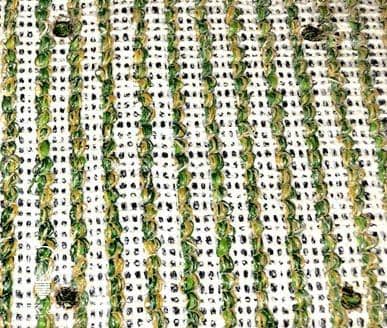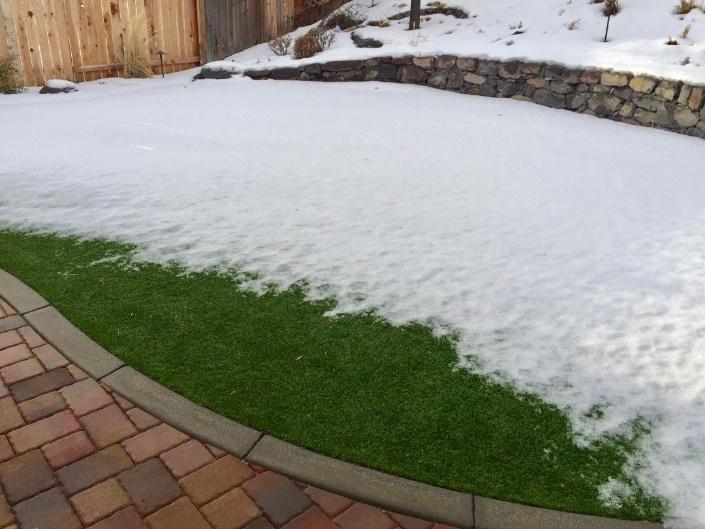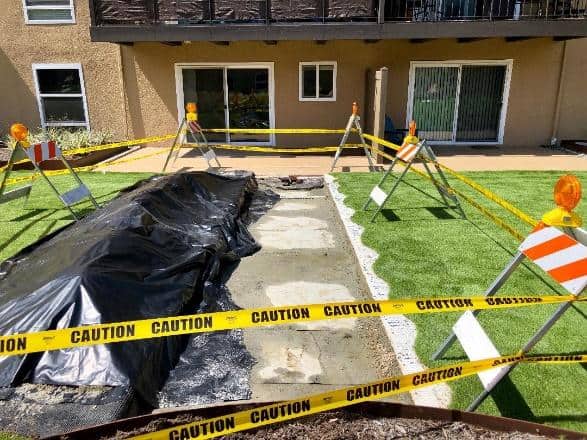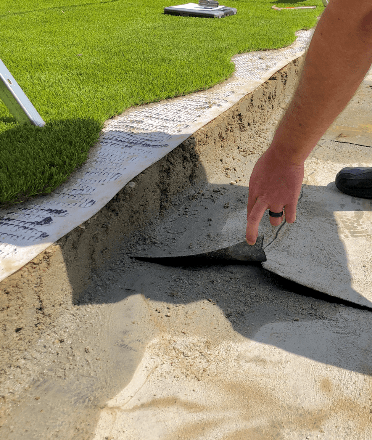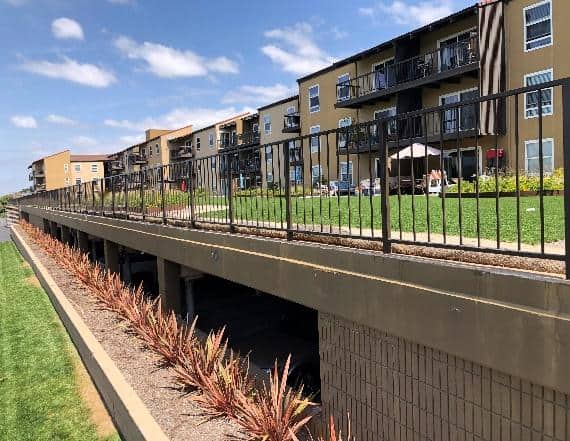Every year when monsoon season is upon us, we all know what that means… possible flooding.
Over the last two years alone, there have been record amounts of rainfall across the nation prior to monsoon season. What does this mean to the synthetic turf industry? It means it could cost you and/or your customers thousands of dollars in damages. Just because your turf product drains 30+ inches per hour per square yard does not mean your subbase does.
This month ASK JW will dive deep into synthetic turf & drainage, and how a “flawed subbase” can affect your entire Installation and cause extensive damage.
Does the turf you place have anything to do with drainage? Yes, it is the first component that you should consider when choosing each product for each application. Synthetic turf has evolved over the last two decades and most synthetic turf products on the market today are hole punched to allow for proper drainage. Many Installers and clients primarily choose synthetic turf by its “appearance and feel”, ignoring the fact that that product they chose may cause drainage issues long-term. Turf manufacturers are understanding the importance of their products to allow for certain amounts of water/fluids to drain through the backing. Punching holes in the backing to allow for positive drainage has become the only way. The drainage holes vary with each manufacturer and each product. I have seen drainage holes from 2”, 3”, 4” and up to 8 inches on center. The bottom line is that the more drainage holes there are, the better the drainage. The closer the holes are punched allows for contaminants to make their way through the backing and into the soil simulating natural grass. Synthetic turf products that have drainage holes farther apart from each other will create slow permeability rates. This means that excess water and fluids will not drain as fast and may cause flooding.
“Fail to Plan, Plan to Fail”
Misconception
There is a misconception when it comes to understanding drainage in synthetic turf products. Just because your turf product says it can drain 30+ inches per hour doesn’t mean your sub-base will. Understanding sub-base materials is very crucial to a successful installation. The images above show poor permeation in the sub-base which prevents proper drainage. Most turf installers think they can just cover up bad soils with good drainage soils. Eventually, the underlying soils that are high in clay and/or conglomerates become fully absorbent, then reject excess water intrusion – this is when flooding occurs. If your sub-base is of poor quality, I recommend over-excavating then remove and replace it with quality imported drainage materials. If the area is known to have excessive flooding, then I recommend placing clean crushed aggregates to prevent erosion of sub-grade and sub-base materials.
Drainage Aggregates
When choosing imported subbase materials for drainage and good permeability, I recommend aggregates that are created with high-quality hard rock, sand, and gravel. Below are types of materials for placing underneath synthetic turf. When placed in smaller lifts and compacted properly, these materials will retain density, allow permeability, and will be able to withstand excessive water penetration.
- Crushed / Decomposed Granite (choose high quality-not muddy fines)
- Limestone Chat
- 3/8” minus mixture
- ¾ washed limestone
“My favorite is Limestone Chat. It stays hard when compacted and has a great permeation”.
JW
“Getting the Water to Exit”
Many contractors and homeowners overlook potential flooding in their design. They overlook poor drainage thinking that placing synthetic turf will assist in the “muddy” backyard. Your yard may not become muddy anymore but the water that created that mud must go somewhere. I have witnessed many installations where poor drainage caused extensive amounts of damage, flooded houses, buildings, restaurants, and sporting facilities all due to ignoring existing factors.
Below are some factors to look for when designing or installing synthetic turf on ALL projects.
- Does your synthetic turf drain? How much per square foot, per yard?
- Is the area located in a flooding area?
- Is the Installation in a path where large volumes of stormwater will affect the design?
- Is the area higher than the buildings foundation level and/or stucco weep screed?
- Will you have to slope and/or re-grade areas to create positive drainage and exit of excessive floodwater?
- Does the rooftop, balcony, and/or mezzanine have scoffer exits?
- Will you have to redesign and connect underground piping from the scoffers to exit the water?
- Have you calculated the size and square footage of rooftops, balconies and/or mezzanines that will dump rainwater upon your installation
- Storm/rainwater must exit its initial surface and drain until it reaches its settling point. If the building’s rooftop is 10,000 square feet in surface area, then 1 inch of rain will produce approximately 8 thousand gallons of water flowing onto your turf.
- Where will this added surface water travel?
- Is the existing area have drainage issues? And/or existing soils that remain saturated?
- If a weed suppressor is to be installed, is it permeable? How fast does it drain?
- Does your installation require contouring? If so, will you create more issues by building mounds, preventing the escape of water?
There are many factors to think about on every new project that is to be completed. Knowing and being aware can prevent issues when it comes to drainage and flooding.

Is The Proposed Area Located In A Possible Flood Zone?
If the area you want to place synthetic turf in looks like the image above? You will need to reconstruct the entire area to an elevation that will allow for the exit of water. Exit drains must be installed to prevent this type of flooding.
*** You will need to respect the sloping towards adjacent properties***
Exit Drains, French Drains & Catch Basins
Excessive water run-off that floods synthetic turf areas will cause failure in the sub-base. Exit drains, french drains, and catch basins should be considered when installing turf in areas where flooding may occur.
*** Make sure your backfilling of trenches around pipes and drains is firmly compacted***
Structures & Drainage
It is crucial to understand how structures that are outside your installations may aid in flooding and damages. Rooftops, balconies, and mezzanines route floodwaters to drains and scoffers that many times exit where your installations are being placed.
I recommend speaking with the client and communicate possible drainage and flooding issues. If the elevations are not correct prior to your installation, they will need to be adjusted by either re-grading or placing exit drains.
When doing your initial jobsite meeting, it is a must to inspect the surroundings to ensure excessive flood water can be managed away from your installation.
Before you go and start installing your turf, I recommend doing water tests to ensure the existing area has proper slope, drainage, and a place for the water to exit.
Rooftop, Balcony, & Mezzanines Scoffer Exits
The image to left is a beautiful installation by a successful turf contractor that relied upon the existing drains to do their job – they didn’t. The drains failed because they were clogged to begin with. Once the rain started and flooding began, this storefront was overcome by waters that reached 6 inches higher than the weep screed and caused damage to the interior. The roof alone produced more water run-off than the installation had received. The scoffer exits added additional gallons of rainwater contributed to the damage
Prior to installing any turf in a backyard that’s rear elevation is higher than the foundation of the home or building, it is imperative that you not take on the responsibility of floodwaters.
The image to the left shows that the putting green was placed in the center of the yard. The putting green had to be raised and leveled so that the golf ball wouldn’t roll off the surface.
Raising of the putting greens edge near the house caused the entire length of the putting green to be much higher than the threshold of the patio door. This caused flooding to the interior.
If you zoom in, you will see that the roof scoffers added to the problem by allowing the rooftop to drain to the scoffers, forcing floodwaters to enter the patio door.
I recommend installing catch basins, drains and/or piping to allow for the escape of floodwaters.
Is The Installation In The Path of Large Volumes of Stormwater?
When installing synthetic turf in commercial applications in the path of excessive water from building rooftops, sidewalks, and streets, I recommend placing commercial drains to handle rushing floodwater to prevent damage to the turf and surrounding areas.
*** Make sure your backfilling of trenches around pipes and drains is firmly compacted***
Foundation Level & Stucco Weep Screed
It is very important to keep the elevation of compacted materials below foundation weep screeds. Keeping all hardscape and landscape below the weep screed is required by most building codes and prevents water from entering the interior.
Creating a Positive Slope and Exit of Hardscape Flood Water
The images above show that the pool deck and patio deck are sloped toward the proposed turf areas. Exit Drains are installed to allow water run-off from the hardscape onto the turf and exit the yard successfully.
*** Make sure your trenches around pipes and drains is firmly compacted***
Drainage Pipe & Compaction
I have expressed the concern for compacting trenches when backfilling. The above pictures show poor compaction where drainage pipes were installed. This poor workmanship has now left depressions in the surface. These depressions will cause trip hazards and may cause injury. When placing drainage pipe, it is crucial that you compact the trench in lifts to prevent this from happening. I recommend a mixture of clean ¾ aggregate with the existing surface to prevent future settlement.
Respecting the “Weep Screed”
When installing synthetic turf between building foundations, it is imperative that you not only slope the area out and away from the building but keep the elevations below the “weep screed”. Weep screed is a building material used along the base of an exterior stucco wall. If you place your turf higher than the weep screed, it may cause water to penetrate the building’s interior. Make sure you maintain a positive slope between buildings to ensure that excess water can escape.
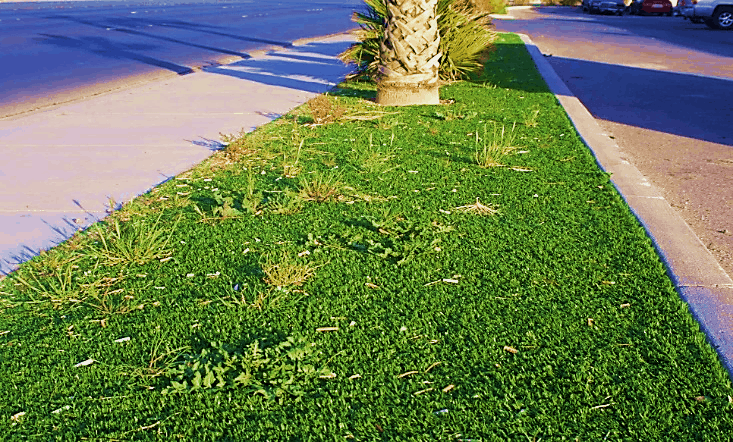
Vegetation & Drainage

Over the years, I have seen contractors ignore placing a weed suppressor under synthetic turf installations. The once beautiful installation they were so proud of turned into a nightmare several months later. The existing crabgrass and broadleaf weeds grew up through the drainage holes of the synthetic turf and now the client must maintain a once maintenance-free lawn. Skipping this very important step in a successful installation can cause misery to both the client and the contractor and may cause flooding of the area due to the drainage holes being clogged.
“Does your weed barrier drain like your turf does”?
Placing a weed suppressor below the synthetic turf after removing the natural grass is crucial to prevent the drainage being disrupted. Using an inferior weed barrier that is not permeable and does not allow water to flow through quickly will cause flooding of the area.
I recommend using SGW’s quality weed barrier. It is professional-grade, provides water and air permeability up to 10 gallons per square foot, and is backed by a 15-year warranty.
Excessive flooding may cause the growth of mushrooms and weeds.
Turf Ribbons, Borders, & Drainage
When placing turf ribbons and borders, it is crucial to compact the subbase to perfection. Most turf ribbons and borders receive water run-off and if the base is not compacted 80% or higher, the exiting water will saturate the compacted materials and cause settling – which may cause injury due to being a tripping hazard. I DO NOT recommend designing turf ribbons into your project unless you have a positive slope to allow all fluids to exit the area quickly. If not? Your sub-base will settle.
Putting Greens, Traps, & Drainage
A majority of putting green synthetic turf does not have drainage holes punched into them. This is to maintain the integrity of the sub-base. The sub-base must maintain its hardness to prevent any changes to the surface of the putting green. I recommend keeping all water away from putting greens. If you elevate your putting green to keep floodwaters away, make sure the elevation does not hinder positive slope and drainage to the surrounding areas.
Sand and grass traps must have an exit drain installed to remove flood waters from filling up and causing settlement.
Bocce & Lawn Bowling

Bocce courts & lawn bowling have become very popular over the last decade. Floodwaters can damage these surfaces to where replacement is the only option. If there is any settlement due to improper drainage, it will cause irregular ball roll. Make sure you design the surrounding area to slope away from the courts.
Pet Turf & Drainage
In order to create a successful pet turf area, it must start and end with the fluidity of all substances penetrating through the surface of the turf. If the synthetic turf product does not give the ability of substances to flow, bacteria may form and contaminants may remain between drainage holes and create lingering odors. SGW’s 100% Permeable Pet Turf is specifically designed for animal and pet use. This amazing product features an “Ultra-Flow” technology and can drain over 400 inches per hour. Its unique design allows all fluids to easily flow through the entire product. Make sure that the soil below the area to be installed drains well and has good permeating qualities. If the soil in the area does not drain or permeate, you will have to remove and replace with a proper drainage material that will retain compaction. Allowing flooding in pet areas will cause excessive bacteria to build up, so make sure you keep all pet areas dry and maintain it with SGW’s Turf Fresh Enzyme Deodorizer. When installing pet areas, I recommend using the Airdrain Grid underneath for rapid escape of pet urine, fluids, and water.
Conturing, Drainage, & Flooding

“When should I go flat and when should I contour?” – a common question when it comes to turf installations. When drainage is not a concern and you are free to be as creative as you’d like with your turf installation, contouring will set your work apart.
When you contour synthetic turf, dynamics of light (sunlight) brings out multiple shades of colors when different angles are created. When the subgrade materials are contoured by grading slopes and small mounds, the beauty of the synthetic turf comes alive allowing the fibers to open and close – resulting in a natural-looking surface.
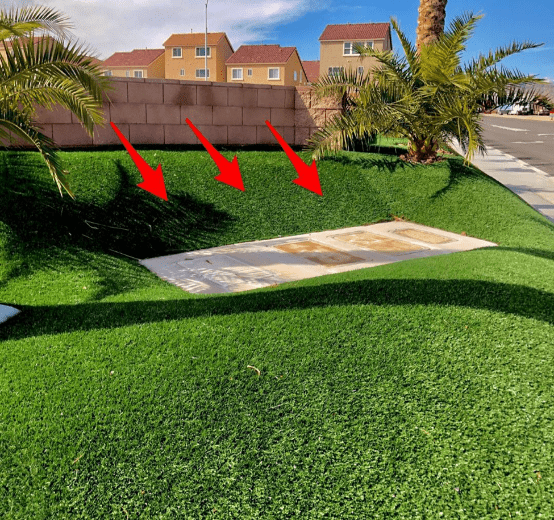
There will be many installations where you’ll have to decide whether to grade your subgrade flat or contoured. Some clients have preferences that you should accommodate since it is their project. There will be installations that proper drainage supersedes all requests for contouring or being flat. When you contour synthetic turf, you must understand that you are creating a slope where water runoff could possibly flood. If the exterior of the contour is up against a wall, curbing or building, you must be careful not to create an area where runoff from the contouring will cause damage.
Drainage & Snowfall
In states where there is record snowfall, I recommend placing a firm compacted base with quality “drainage rock”. When snow melts it saturates the sub-base. When the sub-base is saturated, excessive water run-off will occur. Make sure you have positive drainage away from the turf area.
Rooftop, Balconies, & Mezzanines

Synthetic turf on rooftops, balconies, and mezzanines must have proper drainage. I strongly recommend placing a drainage grid below the balcony or rooftop application so water can run through the synthetic turf and drainage grid – allowing for the water to escape. Without a drainage grid, the longevity of the synthetic turf will be depleted due to thermal contraction and the buildup of contaminants.
AirDrain Geocell has patented expansion and contraction connectors built-in and can add valuable LEED points to any green roofing project. It is a unique and extremely easy to install assembly design and is 100% post-manufactured recycled content.
Lightweight at only 3.1 pounds per 7 square feet and a rating of 33,552 psf, AirDrain is the ideal drainage medium for green rooftop applications.
It can move water rapidly vertically and horizontally or capture it for retention with AirDrain’s 92% air void and 400 drainage notches on each side of the part. AirDrain is capable of holding .576 gallons of water per sq.ft. if needed until it can evacuate from the roof to the perimeter exit drains – which is a holding capacity equal to approximately 6 inches of compacted gravel.
- AirDrain is a low cost, easy to install, Geocell drainage grid that creates a 1 inch 92% air void underneath your artificial turf.
- AirDrain elevates the synthetic turf above the subgrade to allow air to circulate and water to pass through rapidly.
- AirDrain helps keeps the surface temperature at lower levels due to its ability to allow a continuous movement of air.
- AirDrain is made from 100% recycled copolymer which has the impact modifier “metallocene” added to it for qualification as a “No Break” plastic, making it able to withstand extreme heat and cold and still maintain its performance.
Drainage, Flooding, & Lawsuits
I wanted to share the images above to bring awareness of how ignoring drainage can be a costly repair. This rooftop installation failed due to having positive drainage. As you can see the contractor used the wrong sub-base materials which caused extensive flooding. Using the wrong sub-base materials caused flooding onto patio areas which entered the interior of the condos. The saturated sub-base materials caused the entire installation to be too heavy causing structural stress upon the structure. Synthetic turf that is improperly installed over structural surfaces may result in lawsuits. Having a successful design that allows the escape of floodwaters will always protect you against litigation.
When Excessive Rainwater Flows Rapidly
When existing soils below the turf are saturated with excessive rainwater, the compacted subbase will not be able to receive any more – when this happens the drainage holes become useless.
When torrential rains hit hard, this action speeds up – and since the water needs to escape, the overflow of water may cause damage to surrounding areas.
It is important for you and your team to learn all you can about elevations, slopes, drainage, and flooding when it comes to installing synthetic turf.
“There is never enough time to do the job right, but always enough time to do it over”
“Don’t be one of these guys” … JW

For more information regarding drainage please contact J.W. at askjw@sgwcorp.com or call Toll Free the Ask JW Hotline 888.846.3598


